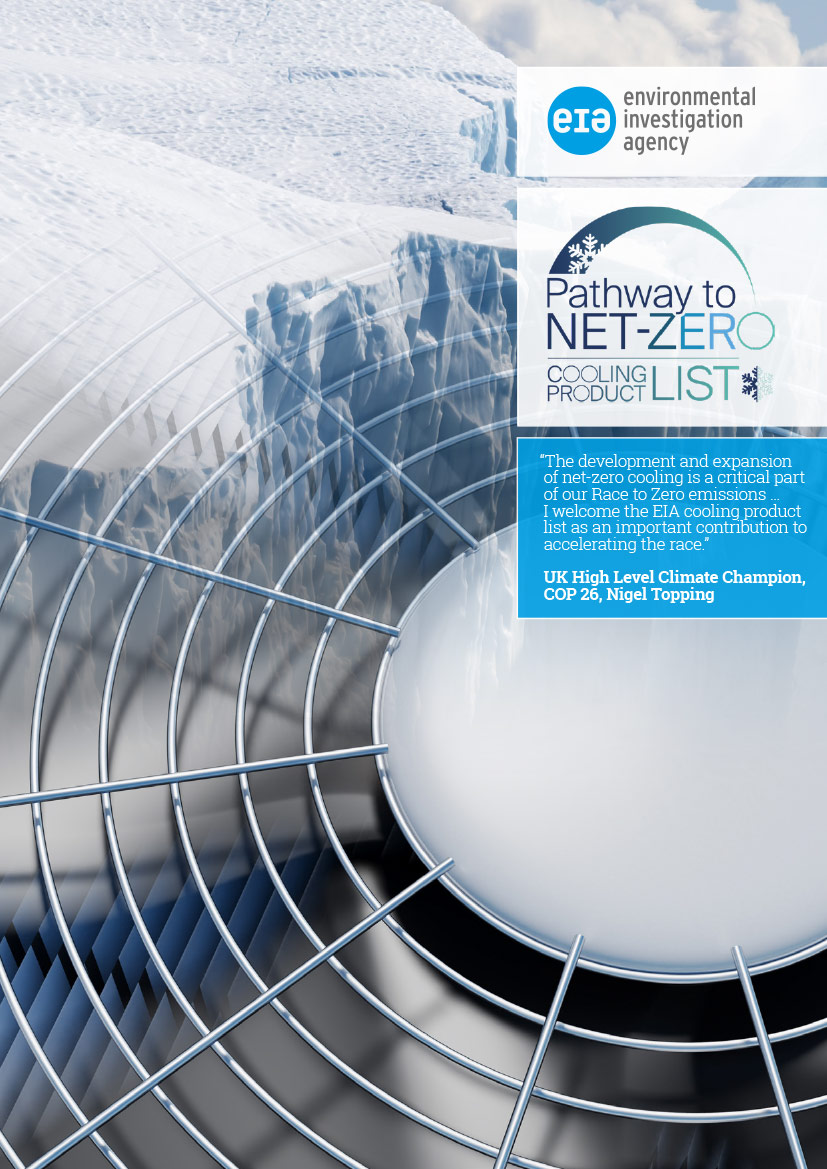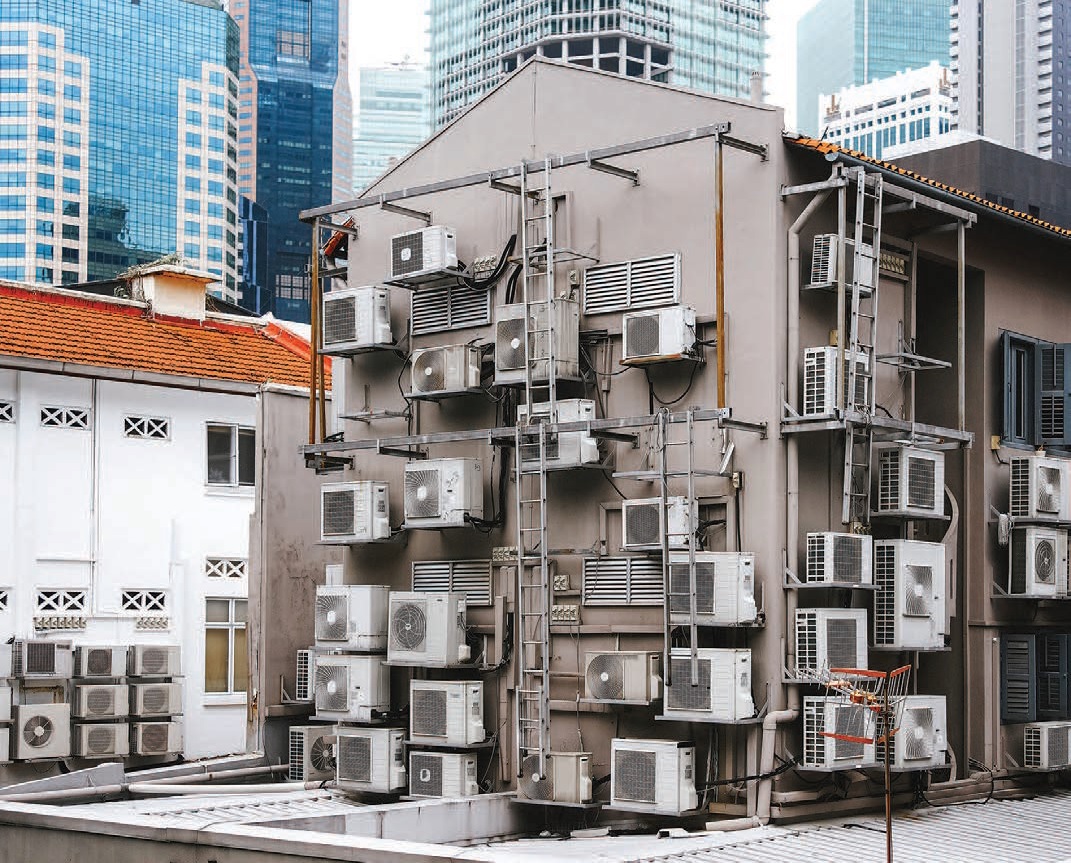It was a pleasant surprise to hear good news about the environment when the Montreal Protocol hit headlines last month for all the right reasons as scientists from Lancaster University modelled how the Protocol’s phase-out of ozone-depleting substances will avoid global warming of about 2.5°C by the end of this century.
The timing of this news was impeccable as today (16 September) we celebrate World Ozone Day. For more than 35 years, the Montreal Protocol has played a crucial role in improving how we keep ourselves, our food and our vaccines cool – but there is still more to be done to put the cooling sector on a sustainable pathway.
The significance of the emissions avoided by the Montreal Protocol cannot be underestimated. As the delayed CoP26UN climate talks get underway in November in Glasgow, countries must reaffirm and increase their commitments to pursue efforts to limit warming to 1.5°C above pre-industrial levels. To meet this target, it is recognised that global greenhouse gas emissions must decline to net-zero by 2050 at the latest and fast action on cooling is an essential part of the solution.

Forest fires in Russia, triggered by climate change
We must not falter on these goals. This summer the reality of climate change has impacted many of our lives, with flooding, forest fires and heatwaves devasting communities around the globe. As the planet warms, these kind of horrific weather patterns will occur more frequently and with greater intensity.
But here comes the paradox – as our planet heats, we turn increasingly to cooling equipment. With demand for cooling rapidly rising, emissions from this sector are a major driver of climate change and are expected to reach 13 per cent of total greenhouse gases emissions by 2030.
Cooling equipment causes emissions in two ways; firstly, there is the energy used to power it. A big chunk of emissions also comes from hydrofluorocarbon (HFC) refrigerant gases. HFCs are short-lived potent greenhouse gases, often many thousands of times more powerful than carbon dioxide.
In recognition of the threat HFCs pose to our climate system, the world is acting to phase down these gases under the 2016 Kigali Amendment to the Montreal Protocol; developed countries began to reduce HFC production and consumption in 2019 and most developing countries will follow suit in 2024.
While this is a promising start, the Intergovernmental Panel on Climate Change (IPCC) Sixth Assessment Report, issued last month, warns that we must increase the pace of the HFC phase-out to hold warming below 1.5°C above pre-industrial levels.
 So, how can we keep cool without warming the planet? The most sustainable way to keep cool is to avoid the use of mechanical cooling where possible, through clever building and city design. For example, planting trees in cities can help reduce summer temperatures by as much as 5°C.
So, how can we keep cool without warming the planet? The most sustainable way to keep cool is to avoid the use of mechanical cooling where possible, through clever building and city design. For example, planting trees in cities can help reduce summer temperatures by as much as 5°C.
But the reality is that as our planet sizzles, human health and food chains will increasingly rely on cooling appliances. Earlier this year, EIA launched a pathway to net-zero cooling product list aimed at supporting users of cooling to make sustainable choices.
The product list highlights the most efficient available refrigeration and cooling appliances, as well as heat pumps which are an integral part of successful decarbonisation. To qualify for the list, products also must use a group of sustainable refrigerants called natural refrigerants. Natural refrigerants were the original refrigerants used in cooling appliances, but unlike HFCs they don’t warm the planet. It’s not much of a surprise to learn that they have been making a huge resurgence as companies, consumers and governments act on climate change.
EIA’s findings showed some exciting natural refrigerant success stories. For example; did you know that more than a billion household refrigerators and millions of small commercial refrigerators use natural refrigerants? They’re even used in large refrigeration systems, with more than 35,000 supermarket systems using natural refrigerants around the globe. We also highlight HFC-free vaccine coolers which run on solar power, making then truly net-zero cooling products.
Despite huge growth in demand for room air-conditioners, we were disappointed by manufacturers’ reluctance to adopt natural refrigerants, with only three companies making the list, the clear leader being Godrej & Boyce which has rolled out more than 600,000 units in India. If the company can do it there, why are other manufacturers not following suit?

Air-conditioning units in Singapore
Other sectors slow to make progress included transport refrigeration, with road transport being the worst. The use of HFCs remains the norm in refrigerated lorries and high leakage means that HFC emissions account for about 20 per cent of a vehicle’s total emissions.
Lack of innovation in the cooling sector was highlighted last year by a Carbon Disclosure Report which found that manufacturers of cooling were behind the curve on business readiness for a low-carbon transition, citing below-average investment in research and development compared to other capital goods sectors.
The slow pace of change in key areas of the cooling sector must be addressed to put cooling on the pathway to net-zero. Manufacturers should join the UNFCCC’s Race to Zero campaign and step up to the climate challenge through a rapid roll out of accessible net-zero compatible cooling equipment.
Governments also have an essential role to play. As countries bring updated Nationally Determined Contributions to the climate talks, these must include ambitious cooling plans which promote uptake of ultra-low GWP natural refrigerants and energy efficient technologies, as well as not-in-kind solutions.






